
 |
Trujillo — Huaca de la Luna
|
After seeing the Chimu's mud city of ChanChan in the morning, and a relaxing lunch in Huanchaco, we were in for another archeological treat at the Temple of the Moon, about 10 kilometers on the other side of Trujillo from ChanChan. This beautiful and terribly interesting site is a remnant of the Moche culture, which flourished in this section of Perú for almost 1000 years, from 100 B.C. to 850 A.D. It is the same culture responsible for the famous Señor de Sipán mummy, which we unfortunately didn't have time to see. We were very impressed with the Huaca de la Luna, though.
The structure of the place is fascinating, as the Moche covered old walls with new ones, every 100 years or so. The new walls had similar, but slightly different, decorations, and served as preservatives for the older walls beneath them. For that reason, the striking decorative panels you see in the middle here sport the original colors; there has been no restoration. At the right below are Bro. Paul, Kathy and our (of course) knowledgeable and personable guide, heading from one section of the site to another.
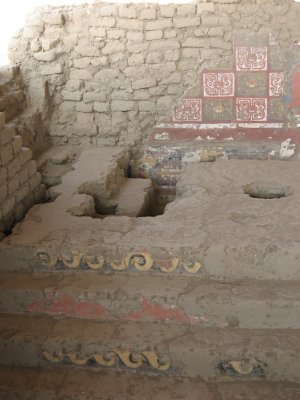 |
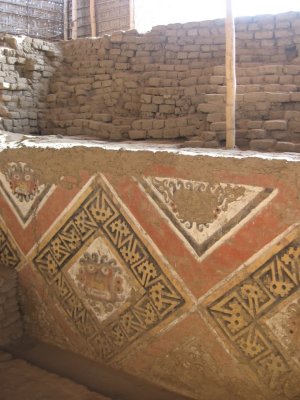 |
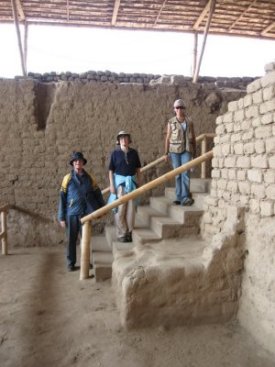 |
Here are even better pictures of the striking art work, preserved for all these centuries by the newer walls around it:
 |
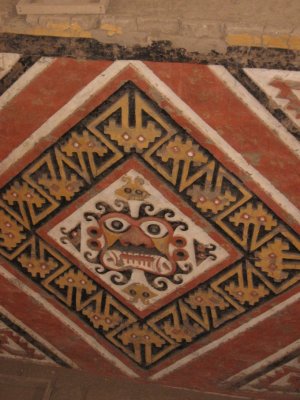 |
These photos can give you an idea of how the site looks. At the left we are outside the area where the pictures above were taken, looking down into the tunnel the Spaniards dug when looking for gold in the Huaca. On the right we are in the sheltered area, where our guide is explaining the temple's iconography.
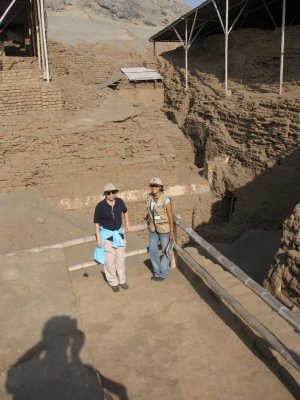 |
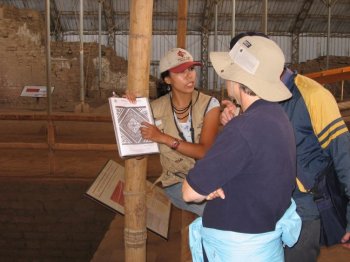 |
In the distance, beyond the archeologists' shelters in this photo, you can see the large mound that is the Huaca del Sol (Temple of the Sun). This site was the first of the two discovered and may be the largest pre-Columbian structure in the Americas. However, once the marvels of the Huaca de la Luna began to be uncovered, the archeologists were understandably more interested in working there. Hopefully, eventually both sites will be able to be fully explored.
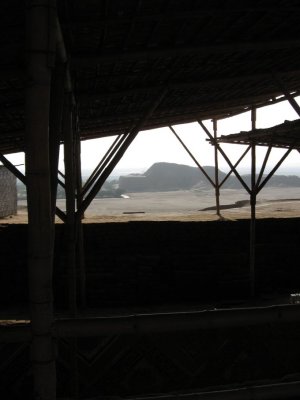
The broad plain between the two Huacas (whose names, incidentally, were given them by the Spaniards; we have no idea what their purposes might have been for the enigmatic Moche) has recently yielded even more archeological wonders—a city that had previously been buried in the sand!
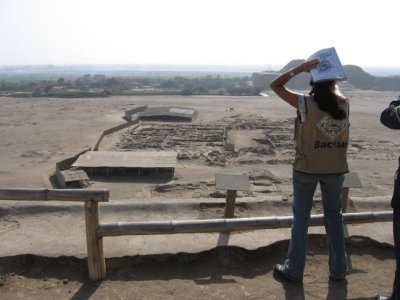 |
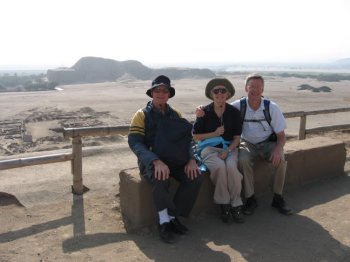 |
The current archeological theory holds that the Huaca del Sol was the administrative building for the city's government, while the smaller Huaca de la Luna was its religious center. Possibly more information will be found as the city is excavated, to shed more light on these remarkable structures. Archeology really is everywhere in Perú, and it's fascinating!
 Back to main page Back to main page |
Back to Trujillo index page  |
All photos, unless otherwise credited, are © by Henry J. Amen III. Please do not use without permission.